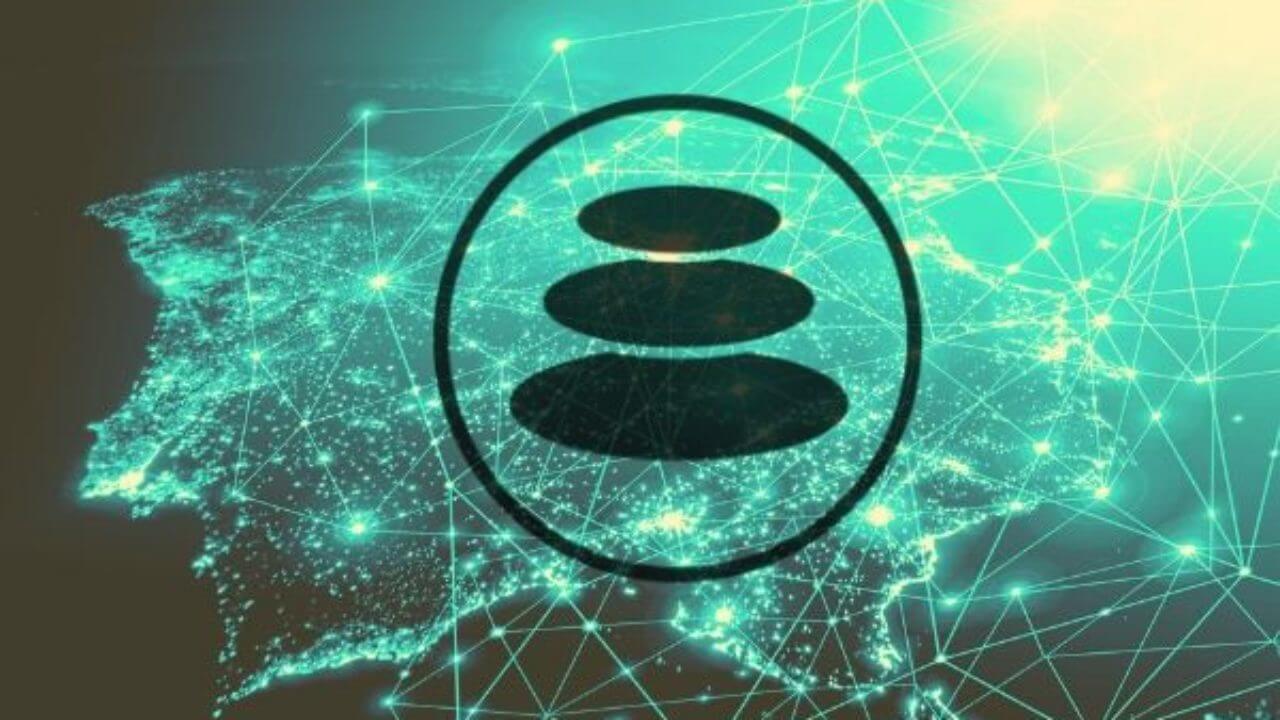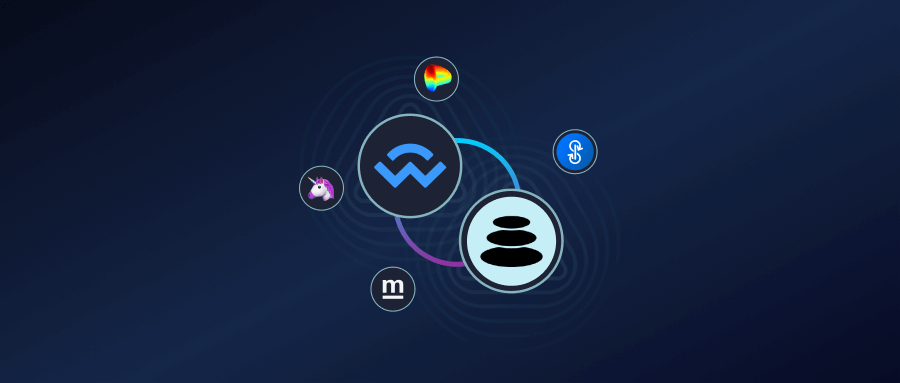DeFi is currently the hottest thing in the crypto space, thanks to DeFi protocols that challenge everything we know about money. Smart cryptocurrency investors are rushing to DeFi platforms to passively earn money, trade with the best prices, and find ways to multiply their portfolio.
Balancer is one such DeFi protocol. The project is making waves in the space with its cutting edge ideas like customizable liquidity pools, the ability to acquire BAL tokens by simply staking in pools, and a smart order routing protocol that finds traders the best prices.
Let’s examine Balancer more closely and see how exactly you can start benefiting from the protocol!
Understanding Balancer
Launched in September 2019, Balancer is an automated market maker (AMM), a portfolio manager, exchange, and liquidity provider that runs on top of Ethereum. Balancer enables traders to exchange various cryptocurrencies with minimal cost and slippage. It aims to replace centralized market makers with peer-to-peer and non-custodial trading and exchange services.
Decentralized trading platforms can use the Balancer protocol to determine the best exchange rates and trading prices. The protocol provides liquidity for the trades, using the funds deposited by stakers/investors in the platform’s various liquidity pools.
Balancer is not the first AMM in the DeFi space. What makes it special is that it supports up to eight assets, including ETH, DAI, and USDC per market.
Balancer Pools
Balancer Pools are liquidity pools, in which anyone can stake crypto and hence inject liquidity into the protocol. Unlike other liquidity pools in the DeFi space, Balancer Pools don’t require you to split between just two tokens. Instead, you have at your disposal up to eight tokens. For instance, a pool could have 30% DAI, 30% LINK, 30% MKR, and 10% WETH, while other pools can only support, let’s say, 60% USDC and 40% MKR.
Balancer employs smart order routing (SOR) to provide the best rates and trading prices possible. Balancer pools are like index funds; only this time, instead of being charged for portfolio management services, you’re the one that actually gets paid for contributing liquidity.
Balancer pools are also customizable, meaning users can optimize them for different needs. For instance, we have Liquidity Bootstrapping Pools (LBPs) in which you can create deep liquidity for your token. There’s also stablecoin pools that support zero impermanent loss.
How can You Use the Balancer Pools?
You can use balancer pools for two purposes: providing liquidity and trading.
#1. Providing liquidity: you can deposit any of the eight supported tokens into pools, providing liquidity to traders of that particular pool. Liquidity providers stand to earn a fee (paid by the traders). However, volatility and other market factors can sometimes cause liquidity providers to lose part of their investment. Studying market patterns keenly and not investing more money than you can afford to lose are some of the ways to mitigate potential losses.
#2. Trading: Users can trade tokens in a safe and peer-to-peer manner. Balancer’s SOR protocol works to ensure the best prices.

How to Provide Liquidity to Balancer
The process of providing liquidity to Balancer is pretty straightforward.
- Visit Balancer pools and connect MetaMask, WalletConnect, Portis or Coinbase wallets
- Take a look at the listed pools and choose which one you would like to go inject liquidity to
- Click Add Liquidity
- Click Unlock to view the tokens you chose in the previous step. This step authorizes the Balancer protocol to use your deposited tokens
- Indicate how many tokens you want to deposit
- Confirm/Complete the transaction on your wallet
Before you get started, ensure that you have a sufficient balance of the tokens you want to deposit.
Liquidity Mining
Balancer announced that it will be supporting liquidity mining starting from June. To this end, the protocol will be distributing 145,000 BAL tokens (roughly 7.5M per year).
All you need to do to earn the token is to provide liquidity to the pools. Rewards will be paid out every week. The process is enabled for all pools on the platform, but with this condition: “a USD price can be extracted from CoinGecko for at least two tokens present in the liquidity pools.”
Staking in Balancer doesn’t just earn you BAL. It gives you an opportunity to make your voice heard in the direction of the protocol.
The BAL Token
BAL is the native cryptocurrency of the Balancer platform. The team introduced the token to make the platform decentralized by “diversifying governance.” Announcing the move, the team said: “We believe BAL tokens are the vehicle to drive alignment and participation in the protocol. BAL tokens are not an investment; BAL token holders should be people that interface with the protocols in some way, are committed to its future development, and want a seat at the governance table.”
BAL token holders will help the platform achieve its highest potential. The team gives the following examples as to how: deploy the platform on other blockchains apart from Ethereum, implement scaling solutions, and the introduction of fees to start generating revenue. BAL holders can be at the front seat in actualizing these and more.
The Hack That Shook Balancer
The world of DeFi and indeed crypto, in general, are constantly targeted by hackers, phishers, and all manner of bad actors. Balancer was the victim of such an attack on June 29 this year that led to the pool losing about $500,000 worth of crypto. Since Balancer is decentralized, anyone can create an asset pool with whatever parameters they wish. Let’s go through what happened:
A hacker took a flash loan of $23million worth of Wrapped Ethereum (WETH) tokens from dYdX then proceeded to trade the WETH with Statera (STA) tokens against themselves, back and forth, 24 times. This almost completely drained the STA liquidity pool. By the time the hacker was done, STA balance was one weiSTA (one billionth of a coin).
The Balancer protocol was tricked into releasing WETH equivalent to the original balance, granting the hacker a bigger margin for every trade. The attacker didn’t stop with WETH – they did the same thing with WBTC, LINK, and SNX, all against STA.
Analysts at 1inch exchange said, “The person behind this attack was a very sophisticated smart contract engineer with extensive knowledge and understanding of the leading DeFi protocols.” The attacker’s address was not identified because they used an Ethereum mixer to cover their tracks.
BAL’s Token Distribution
The Balancer token’s total supply is 100 million. So far, just 35.4 million of that has been minted, with its distribution being as follows:
- 22.5M went to the developing team, and stock options, advisors and investors 5.65M, or 25% of this is currently locked, with the remaining 75% subject to 3 year vesting period
- 2.5M was reserved for future team members stock options
- 5M was reserved for the Balancer Ecosystem Fund
- 0.435M was reserved for liquidity miners
- Out of the remaining token’s supply, only 1.74 BAL is set to be released each year.
Key Metrics
At the time of writing, BAL trades at 16.01 with a market cap of $111, 162, 211, that places it at #87 in the market. BAL’s 24-hour volume is $10, 665, 976, and it has a circulating supply of 6, 943, 831. The coin’s highest price was $23.73 (June 24, 2020), while its lowest was $7.88 (July 15, 2020).
Buying and Storing BAL
If you wish to acquire some BAL tokens, the platform’s in-house exchange, Balancer Exchange, is the best place to do so. Alternatively, you can grab some BAL from any of several exchanges, including Binance, Huobi, BKEx, OKEx, Hoo, Poloniex, FTX, Bibox, Switcheo Network, BiKi, Bitribe, Uniswap, Bamboo Relay and dex.blue. You’ll find the token as a pair with LEND, DAI, ETH, BTC, USDT, BNB, WETH, MKR, and so on.
BAL is an ERC20 token, meaning it can be stored in any wallet that supports Ethereum. Great choices include MyEtherWallet, MetaMask ethaddress Parity, Guarda, Trust Wallet, Atomic Wallet, Parity, Ledger, and Trezor.
Closing Thoughts
Balancer is not the average automatic market maker. It supports an impressive number of tokens so users can stake in a wide variety of them. Traders can also get the best possible deal, thanks to the platform’s SOR protocol. And even better, staking in BAL gives holders the ability to shape the Balancer protocol into what best shape they envision it to be. The Balancer protocol is only beginning to wow DeFi investors with greatness.

